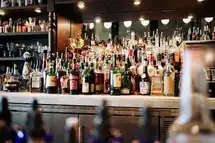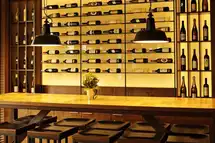What is Loyalty Program Software?
Loyalty program software is a technology solution that helps businesses manage and run their customer loyalty programs. The software typically includes features for enrollment, tracking and reporting, rewards management, and customer engagement. Loyalty program software provides valuable insights into customer behavior and spending patterns, allowing businesses to make data-driven decisions about their loyalty program and customer engagement strategies. The software can also be integrated with other systems, such as point-of-sale, e-commerce, and customer relationship management systems, to provide a seamless experience for customers and ensure accurate tracking of rewards and transactions.
The Advantages of Implementing a Loyalty Program
Types of Loyalty Programs
There are several types of loyalty programs, including-
- Points program- Customers earn points for purchases and can redeem them for rewards.
- Tiered program- Customers earn rewards based on their level of spending or engagement, with higher tiers offering more exclusive rewards.
- Cashback program- Customers earn a percentage of their purchases back as cash or credits.
- Coalition program- Multiple businesses team up to offer a joint loyalty program, allowing customers to earn and redeem rewards across all participating businesses.
- Game-based program- Customers can earn rewards by completing challenges or games.
- Subscription program- Customers pay a fee for access to exclusive benefits, discounts, or services.
- Hybrid program- A combination of any of the above programs, tailored to the specific needs of the business and its customers.
Advantages of Loyalty Programs
Loyalty programs have become increasingly popular in the restaurant industry as a means of driving customer loyalty and repeat purchases. A rewards program is an excellent way to incentivize customers to return to a restaurant time and time again. By earning points for each purchase, loyal customers can accumulate rewards that can be redeemed for discounts or other benefits, creating a strong motivation to continue patronizing the establishment.
One of the primary advantages of a customer loyalty program is the ability to build customer loyalty. By offering rewards for repeat purchases, restaurants can create a sense of loyalty and appreciation among their customers, who are likely to appreciate the added value they receive from the program. Customers who feel valued and appreciated are more likely to continue doing business with a restaurant, leading to increased customer retention and repeat business.
Another advantage of a customer loyalty program is the potential to improve customer service and customer experience. By offering rewards and incentives, restaurants can encourage customers to provide feedback and share their experiences, which can be used to identify areas for improvement and develop better customer service strategies. When customers feel that their input is valued, they are more likely to remain loyal to the establishment, even if they experience a problem or issue.
Rewards programs can also increase repeat purchases and customer retention, which is crucial for the long-term success of any restaurant. By offering rewards and incentives for repeat business, restaurants can encourage customers to come back time and time again, building a steady base of regular customers who are likely to recommend the establishment to others. This can lead to increased revenue and profitability, as well as a strong reputation within the local community.
Moreover, rewards programs can also help restaurants to attract new customers. By offering incentives and benefits for signing up for a customer loyalty program, restaurants can entice new customers to try out their offerings. Once these new customers have experienced the restaurant's customer service and dining experience, they are more likely to become repeat customers and advocates for the establishment.
Your one stop shop for the latest news
Subscribe and stay informed about everything restaurant and food related!
Attract and Retain Customers with an Effective Loyalty Program
A loyalty program is a powerful tool that businesses can use to incentivize customers to continue doing business with them. According to studies, two-thirds of consumers change their spending habits in order to maximize the benefits of loyalty programs. This means that loyalty programs have a significant impact on customer behavior and can help businesses retain existing customers and attract new ones.
The benefits of loyalty programs can include discounts, tailored rewards, priority treatment, and other perks. For example, a coffee shop might offer a free drink after a certain number of purchases, while a restaurant might offer a free dessert or appetizer. By offering these benefits, businesses can create a sense of value for their customers and encourage them to continue doing business with the company.
In addition to retaining existing customers, loyalty programs can also attract new customers to become regulars. By fostering a sense of community among customers and providing a personalized experience, businesses can increase customer engagement and encourage repeat purchases. For example, a restaurant might offer a special discount or event for loyalty program members, creating a sense of exclusivity and community among its customers.
Overall, loyalty programs can have a significant impact on a business's bottom line. By offering benefits and creating a sense of community among customers, businesses can increase customer engagement and encourage repeat purchases. This can lead to increased revenue and profitability over time.
Maximizing Customer Retention with Personalized Loyalty Program
To create a successful customer loyalty program, it is crucial to design a user-friendly platform that provides real-time information about rewards and benefits. In today's fast-paced world, customers expect convenience, and providing an easy-to-use platform is the key to engaging customers and building their commitment to the brand. A user-friendly platform should be designed with the customer in mind, making it simple to navigate and understand the rewards program. It should be easy to join, easy to earn rewards, and easy to redeem them. By doing so, customers will be more likely to participate and engage with the program, increasing their loyalty to the brand.
One way to make a loyalty program more user-friendly is by providing real-time information about rewards and benefits. Customers want to know what they are working towards and how close they are to achieving their goals. Providing up-to-date information about the number of points earned, the rewards available, and the benefits of the program can create a sense of excitement and motivate customers to continue participating. Real-time information also allows customers to plan ahead and decide which rewards they want to redeem, creating a sense of anticipation and excitement.
Another way to increase engagement and commitment to a loyalty program is by tailoring rewards to customers' preferences. By understanding customers' preferences, businesses can create a program that offers rewards that are relevant and valuable to them. For example, a coffee shop may offer discounts on coffee to customers who prefer lattes, cappuccinos, or other specialty drinks. A restaurant might offer free appetizers or desserts to customers who prefer certain types of cuisine. By tailoring rewards to customers' preferences, businesses can increase the perceived value of the program and the likelihood of repeat purchases.
When designing a customer loyalty program, it's also essential to consider the level of personalization that will be offered. Personalization can make customers feel valued and appreciated, increasing their loyalty to the brand. For example, a customer who visits a restaurant frequently might appreciate a personalized welcome message, or an offer of a free drink or appetizer. Personalization can also help businesses to collect valuable data about their customers, enabling them to create more effective marketing campaigns and improve customer service.
Using Loyalty Programs to Boost Average Order Value (AOV)
Frequency of visit (FOV) and average order value (AOV) are essential metrics for businesses to consider when designing a successful loyalty program. FOV measures how often customers visit a business, while AOV measures how much they spend on average during each visit.
To increase AOV through a loyalty program, businesses can offer rewards that incentivize customers to make larger purchases. For example, a restaurant might offer a free appetizer or dessert for customers who spend over a certain amount. This not only increases AOV but also encourages customers to try new menu items they might not have ordered otherwise.
In addition, rewards programs and customer loyalty programs can offer tiered rewards based on customer spending. For example, a customer who spends over a certain amount might receive a higher percentage discount or access to exclusive events. This can motivate customers to increase their spending in order to reach the next tier and unlock more valuable rewards.
Businesses can also use personalized incentives to encourage larger purchases. By analyzing customer data and preferences, businesses can offer rewards that are tailored to individual customers. For example, a coffee shop might offer a free drink upgrade to a customer who consistently orders a certain type of drink.
By increasing AOV and FOV, businesses can see significant growth in revenue and customer retention. A well-designed loyalty program not only provides value to customers but also helps businesses improve their bottom line.
Automated Wage and Hour Law Compliance
Download your free Digital Marketing
Acquire and Retain Customers through a Loyalty Program
Loyalty programs have come a long way since they were first introduced as retention tools for existing customers. Nowadays, they also play a crucial role in acquiring new customers. By offering monetary discounts and unique experiential rewards, businesses can differentiate themselves from their competitors and attract new customers.
One of the ways that businesses can attract new customers is by offering an incentive for joining the loyalty program, such as a reward for signing up. According to a study, businesses with an upfront incentive for joining a loyalty program build their customer base three times faster compared to those that do not have such incentives. This incentive not only attracts new customers but also encourages them to make their first purchase, which is essential for businesses to establish a long-term relationship with the customer.
Moreover, offering existing loyalty program members additional points and rewards for referring their friends can also help businesses expand their customer base. This approach leverages the power of word-of-mouth marketing and turns loyal customers into brand advocates, which can attract new customers at a lower acquisition cost.
Expanding a customer base is important for businesses as it helps them grow and increase revenue. A loyalty program that attracts new customers can help a business achieve its growth objectives. Additionally, by offering personalized rewards and experiences, businesses can increase the perceived value of their loyalty program and differentiate themselves from their competitors. This approach can also help businesses create a sense of community among their customers, which fosters customer loyalty and encourages repeat purchases.
Improving Customer Experience with a Loyalty Program
Customer lifetime value (CLV) is an important metric that measures the total worth of a customer to a business over the entire course of their relationship. This metric is vital for businesses to understand, as it can help them make strategic decisions about marketing, sales, and customer service. A study shows that customers who are part of a loyalty program spend 12-18% more than non-loyalty program members.
Acquiring a new customer can cost up to five times more than retaining an existing one. By focusing on increasing the value of existing customers through a loyalty program, businesses can improve CLV and generate long-term revenue. For example, a restaurant might offer a loyalty program that rewards customers for repeat visits, such as a free meal after a certain number of purchases. By incentivizing existing customers to continue doing business with the restaurant, the business can improve customer retention and increase CLV.
Improving CLV through a loyalty program can also have other benefits for businesses. For example, it can lead to more positive word-of-mouth and referrals, which can help attract new customers at a lower acquisition cost. Additionally, it can help businesses develop a deeper understanding of their customers' preferences and needs, allowing them to create more targeted and effective marketing campaigns.
Utilize a Loyalty Program to Collect Essential Customer Information
Loyalty programs are not just a tool for incentivizing customer loyalty, but they also provide valuable data on customer behavior. This data is vital for businesses to improve the customer experience and create personalized marketing campaigns. According to a study, 79% of consumers are more likely to join a loyalty program if it offers personalized rewards based on their purchase history and preferences.
The data collected from a loyalty program can help businesses understand their customers' purchasing habits, preferences, and pain points. For example, a restaurant might notice that a significant number of its loyalty program members always order the same dish. This information could lead the restaurant to offer a discount on that particular dish or create a new dish based on that flavor profile to cater to those customers.
Loyalty program data can also help businesses create personalized marketing campaigns. By understanding their customers' preferences and purchasing habits, businesses can create targeted promotions and offers that are more likely to be successful. For example, a coffee shop might send a personalized email offer for a free latte to customers who have not visited in a while. This personal touch can create a sense of appreciation and encourage customers to return.
Case Study- Effective Loyalty Programs
- Starbucks- Starbucks launched their loyalty program called Starbucks Rewards in 2009, and it quickly became one of the most successful loyalty programs in the world. With the program, customers earn stars for every purchase they make, and can redeem those stars for free drinks, food, and merchandise. By 2016, Starbucks had over 13 million active members in the program, and it accounted for 36% of their US sales.
- Domino's Pizza- Domino's Pizza launched their loyalty program called Piece of the Pie Rewards in 2015. With the program, customers earn points for every online order they make, and can redeem those points for free pizza. In the first year of the program, Domino's saw a 10% increase in sales, and by 2019, the program had over 20 million members.
- TGI Fridays- TGI Fridays launched their loyalty program called Fridays Rewards in 2015. With the program, customers earn points for every dollar they spend, and can redeem those points for food, drinks, and merchandise. TGI Fridays has seen a 25% increase in loyalty program member spending compared to non-members, and the program has helped to drive traffic to their restaurants.
- Chick-fil-A- Chick-fil-A launched their loyalty program called Chick-fil-A One in 2016. With the program, customers earn points for every purchase they make, and can redeem those points for free food. The program has been successful in driving customer engagement, with 95% of Chick-fil-A One members saying they are satisfied with the program.
Benefits of Implementing a Loyalty Program for Your Business
In today's highly competitive business environment, it's not enough for businesses to merely attract new customers; it's equally important to retain them. A loyalty program can be an effective tool for achieving this goal. By offering incentives such as discounts, special offers, or freebies to customers who make repeat purchases or engage with the business on social media, businesses can encourage customers to return and spend more money over time.
Additionally, a loyalty program can provide valuable data on customer behavior and preferences, which can be used to create more targeted marketing campaigns and promotions. By analyzing customer data, businesses can gain insight into what products or services are most popular, what times of day customers are most likely to visit, and what types of promotions are most effective. This information can be used to create more personalized marketing campaigns and improve overall customer engagement.
Another benefit of a loyalty program is that it can help businesses build brand loyalty and create a sense of community among their customers. By offering exclusive rewards or access to special events, businesses can create a sense of exclusivity and make customers feel like they are part of an exclusive club. This can help build brand loyalty and create a sense of ownership among customers, which can ultimately lead to increased customer satisfaction and retention.
Overall, a well-designed and executed loyalty program can be a powerful tool for businesses looking to differentiate themselves from their competition, attract and retain customers, and ultimately increase revenue and profitability. By investing the effort into implementing a loyalty program, businesses can reap the long-term benefits of improved customer engagement, increased revenue, and expanded customer base.
Keen to grow your customer base?
A loyalty program like Plum Loyalty can multiply your numbers.














































































































